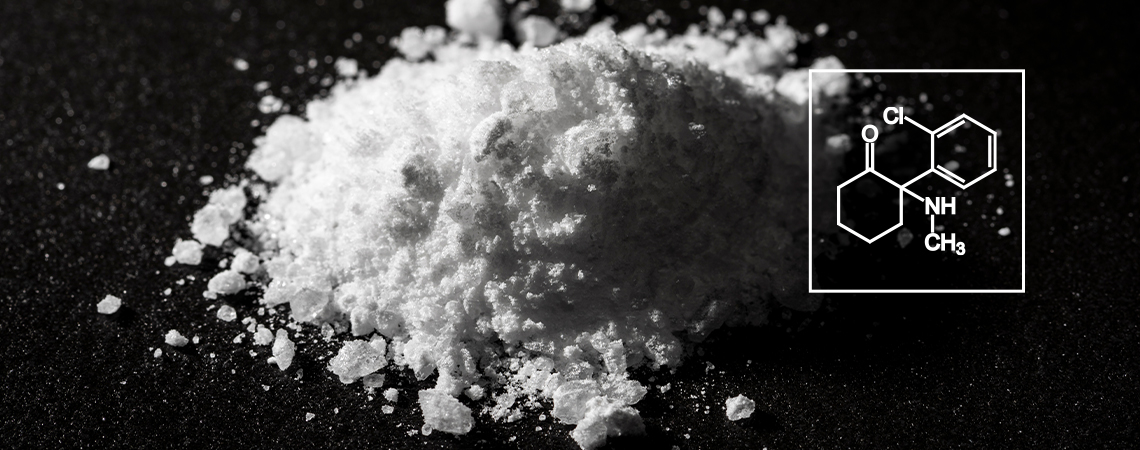
Should Ketamine Really Be Considered A Psychedelic?
More and more often, ketamine gets categorised as a psychedelic drug. But why is this, and are there solid grounds for this grouping? We explore this topic in depth, comparing ketamine with the four classical psychedelics, so we can get to the bottom of whether ketamine is truly a psychedelic.
The world is waking up (again) to the value of psychotropic drugs, and the aura of fear they inspire in the popular imagination is being dispelled. At the forefront of this change are psychedelics—so much so that this era has been dubbed the “psychedelic renaissance”.
Among these drugs, ketamine has found a home in contemporary conversation. But is it a long-lost sibling that truly belongs to the psychedelic family, or is it an unlikely foster sibling with less in common with classical psychedelics than people might think? In this article, we investigate whether ketamine should really be called a psychedelic.
What is a psychedelic?

Psychedelics are generally, with some possible exceptions, thought of as a sub-group of hallucinogens. Psychedelic drugs share a variety of characteristics that distinguish them from other drugs, and though these boundaries often blur, they are a distinct group of compounds—whether you categorise them by mechanism of action or effects.
First, some etymological background. The term “psychedelic” was coined in a dialogue between the psychiatrist Humphrey Osmond and the writer Aldous Huxley. It has Greek origins and translates into something like “mind revealing” or “mind manifesting”.
It has two parts: psychḗ simply refers to “mind” or “soul”, and dēleín means “to manifest” or “to reveal”. They were given this name due to psychedelics' unusual ability to give users clarity and (more objective) insight into their own inner worlds, allowing them to uncover and observe parts of themselves that are usually hidden.
Shortly, we’ll go into more depth about the main characteristics often attributed to psychedelics, but they tend to:
- Act on the brain’s serotonin receptors
- Be physically safe
- Create a rapid tolerance (making physical addiction impossible)
- Create a cross tolerance with one another
- Cause a “trippy” high
- Not cause a substantial “come-down”
But as we’ll see, the traditional “psychedelic” category has become more porous in recent years, and there are now other drugs that are sometimes grouped along with classical psychedelics, which don’t fit many of the above criteria. One of these is ketamine.
What is ketamine?
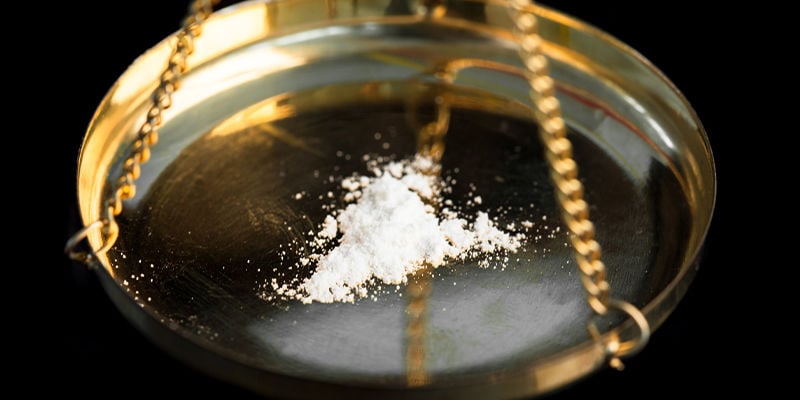
Ketamine is a dissociative anaesthetic that is used in veterinary and human medicine as a pain reliever and a tranquiliser. Recently, it has become very popular as a potential treatment for treatment-resistant depression (Lent, Arredondo, Pugh, Austin, 2019).
Ketamine was created in 1962, derived from phencyclidine (PCP). As it displayed fewer hallucinogenic properties, it was more suitable for medical usage. As an anaesthetic, ketamine preserves breathing and airway reflexes, stimulates the heart, and increases blood pressure, whereas other anaesthetics often depress these functions, which can be fatal.
At low doses, ketamine causes mild dissociation from reality and the self, and significantly inhibits cognition and motor control—with effects not too dissimilar to being very drunk. At higher doses, motor control becomes entirely inhibited and dissociation can be extreme, leading to feelings of having a near-death experience, out-of-body experiences, and the dissolution of reality. In medical terms, a person in this state is anaesthetised; in colloquial terms, they are in a k-hole.
Interestingly, even at very high doses, some people retain some degree of conscious experience in this anaesthetised, k-hole state, and partial recall is often possible. It is this that draws people to use ketamine recreationally, even at highly inhibiting doses.
Is ketamine a psychedelic?
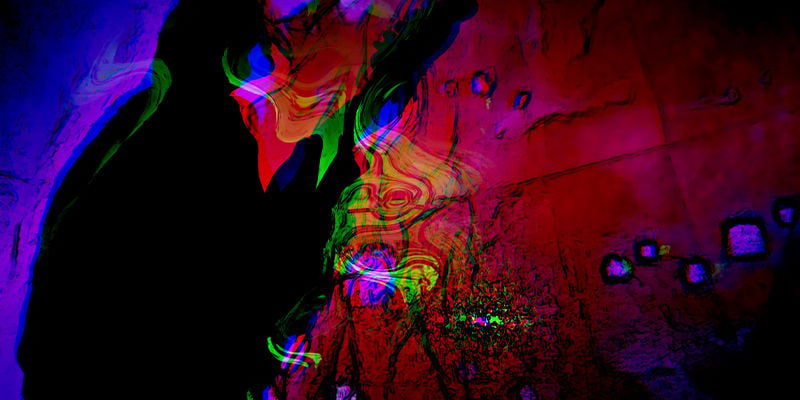
These days, especially in contemporary psychiatry, ketamine is often classed as a psychedelic. But how similar is it to other psychedelics, and should it really be classed as one?
In the following section, we’ll explore where ketamine does and doesn’t fit into the psychedelic category.
The physical level
On a physical level, ketamine and classical psychedelics (psilocybin, LSD, DMT, mescaline) are extremely different, in terms of their chemistry, mechanism of action, and broader effects on the body.
The physical properties of classical psychedelics
First, let’s understand a little about classical psychedelics. Though this list is not exhaustive, psilocybin, LSD, DMT, and mescaline can be considered the four classical psychedelics. Not only do they produce similar effects, but the four drugs share many physical similarities too. For instance, psilocybin, DMT, and mescaline are all naturally produced from L-tryptophan and are known as indole alkaloids. LSD has quite a different chemistry, but it interacts with the brain similarly to the others.
All four of these classical psychedelics appear to exert most of their effects via the brain’s serotonin receptors, working on the 5-HT receptor group. Each drug affects different receptors in different ratios—for instance, psilocybin most readily binds to the 5-HT2A receptors—but each works in a broadly similar way.
And then, once doing their work, all of these drugs produce similar brain states, with heightened activity and connectivity, higher measures of randomness, and a reduction in the oversight of the default mode network (DMN), a region of the brain thought to play a vital role in our sense of self, and that “filters” experience (Gattuso, 2023). In people with depression, it has been observed that the DMN is unusually active.
Finally, classical psychedelics have an extremely good safety profile, despite what anti-drug propaganda might have you think. One study into the adverse effects of the four psychedelics listed here—co-authored by the (in)famous Professor David Nutt—showed that many (but not all) of the cited dangers of these drugs appeared to be misinformation, and that these opinions were rarely based on scientific evidence (Schlag et al., 2022).
In fact, as the effects of psychedelics are almost entirely limited to the brain, they cannot cause overdose, death, or any other physical problem, though it remains unclear what effects they may have on people with underlying mental health conditions such as schizophrenia.
Furthermore, classical psychedelics cannot cause addiction. Due to the way they work, anyone who repeatedly takes them will build up a tolerance so quickly that they will cease to work within a few days. This blocks the opportunity for an addiction to develop. What’s more, because of the similarity in the ways that these drugs work, any one of the four will cause a tolerance for all the others—possibly excluding DMT.
The physical properties of ketamine
Ketamine exhibits an almost entirely different set of physical characteristics and effects compared to classical psychedelics. It is made up of two enantiomers: esketamine and arketamine. The former, also known as S-ketamine, is more effective as an analgesic and anaesthetic, whilst R-ketamine is thought to have longer-lasting antidepressant effects (Sachdeva, 2023).
Broadly, ketamine blocks the brain’s N-methyl-D-aspartate receptors (NMDA) receptors, causing the activation of α-amino-3-hydroxy-5-methyl-4-isoxazolepropionic acid receptors (AMPA receptors), which in turn modulates signalling pathways to affect neurotransmission in the limbic system. Suffice it to say, this is a very different mechanism of action compared to classical psychedelics.
What’s more, while psychedelics have very few physical effects or dangerous drug interactions, ketamine has very strong effects on the body (otherwise it wouldn’t work as an analgesic or an anaesthetic) and it can cause overdose, brain failure, and death when taken in high doses or mixed with other drugs, such as alcohol. That being said, deaths involving illicit ketamine use remain relatively low, with 238 recorded between 1997 and 2019 in England (Corkery, 2021). Around 80% of these involved other drugs.
While the chances of death are low, ketamine is addictive and long-term use can come with a range of health problems, besides those generally associated with addiction. One of the most famous is that, over long periods of use, ketamine can weaken the bladder, causing incontinence.
If taken irregularly and on its own, then ketamine is a relatively safe drug. But when used regularly or taken alongside other drugs, it becomes much more harmful.
The phenomenological level
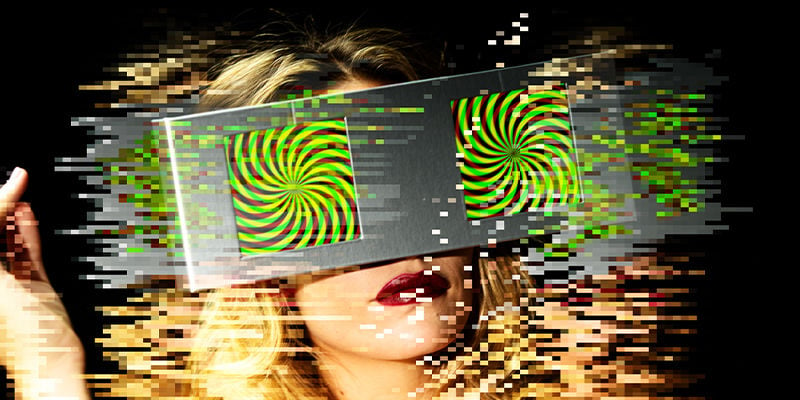
Superficially, ketamine and classical psychedelics share similarities in terms of their effects; i.e. what it feels like to be on them. However, these similarities tend to dissipate under scrutiny.
The effects of classical psychedelics
Even for those who haven’t taken them, the imagery of psychedelics is well-known. These drugs are associated with increased empathy, the saturation of sound and colour, “trippy” visuals/hallucinations, and profound philosophical thought and insight. Some users even report “mystical experiences'' when under the influence of these drugs.
While the effects of classical psychedelics are similar, each drug has its own distinct character. Mescaline and psilocybin generally change the qualities of the world and increase feelings of connectivity with the world and its inhabitants, but leave users rooted in something akin to normal reality. LSD can be much more potent, causing genuine hallucinations and making normal reality hard to access. DMT, lastly, can take people to other universes, where they might even communicate with other beings.
Though distinct in some of their effects, the indole alkaloid psychedelics (DMT, psilocybin, mescaline) have a tendency to feel friendly and safe—though bad experiences are of course possible. LSD often feels this way too, but it can more easily be overwhelming and frightening.
Though introspective voyages are very possible on these drugs, they also all tend to foster a greater sense of connection with the external universe—unless pushed to very high doses. On psychedelics, people often still have a strong sense of connection to themselves. Conversely, a user may experience an ego death at high doses, in which case they feel a strong sense of detachment from themselves.
The effects of ketamine
The effects of ketamine could be described as trippy, but this trippiness bears little resemblance to that of the psychedelic experience. At lower doses, users feel slightly detached or dissociated from themselves, others, and the world. That being said, certain stimuli, especially sound (or music) can be enhanced by ketamine. Though an anaesthetic, lower doses can also have a conversely stimulating effect, hence ketamine is often used as a party drug.
At higher doses, people quickly lose control of their bodies and dissociate. This is characterised by an inability to move properly at all, and difficulty holding onto thoughts or remaining cognisant. People on ketamine may remain awake while feeling more or less unconscious.
At very high doses, a trance-like state can occur, where users enter other realms and have a range of experiences that are very hard to characterise. Though descriptions of these experiences may sound similar to DMT experiences, they are often very distinct in terms of how they feel. These high doses of ketamine can, similarly to psychedelics, offer curious insight into oneself.
Ketamine vs psychedelics: The therapeutic level
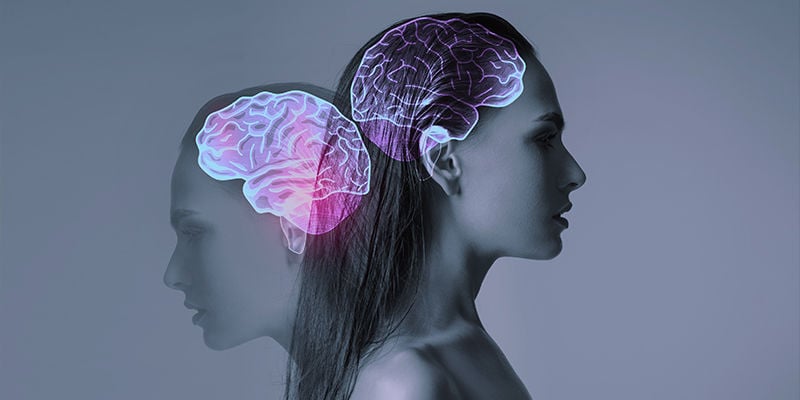
Perhaps the realm where ketamine and classical psychedelics are most similar is in terms of how they are used and studied in the medical world.
The therapeutic potential of classical psychedelics
Research into classical psychedelics varies from drug to drug, with the two most commonly researched being psilocybin (magic mushrooms) and LSD.
Both have shown significant promise for a range of mental health conditions, most notably treatment-resistant depression. One large, double-blind study showed that a single dose (25mg) of psilocybin was significantly effective in relation to major depression (Goodwin, 2022). However, this study also noted that 77% of participants suffered from headaches, nausea, and dizziness. Nevertheless, these “adverse effects” were not deemed to mitigate the results.
A review investigating decades of research into LSD found that it could potentially have a use in a range of disorders, from addiction to depression (Fuentes, 2020). However, due to the age of some of the research, it is necessary to repeat much of it in order to better understand the implications.
Currently, outside of clinical research, psychedelics are rarely licensed for medical use, and so the number of people being tested remains small.
The therapeutic potential of ketamine
Ketamine is currently somewhat of a wunderkind in psychiatry. Licensed for use in various countries, and with a wealth of evidence supporting its efficacy, it is becoming more and more popular for treating depression.
Usually, relatively low doses are used, which is thought to increase levels of glutamate in the brain. Glutamate is known to affect mood, and one of the leading theories suggests it is this increase that gives ketamine its antidepressant properties. The doses can be administered via nasal spray, intravenous injection, intramuscular injection, or via lozenge. They are mild and come nowhere near inducing a dissociative state. Generally, they are administered in a hospital or clinic.
A single dose has been shown to be efficacious for up to three weeks, meaning that treatment is recurrent and regular. This poses a potential risk, and the regular consumption of ketamine may cause a dependency. In London, where only private clinics are licensed to prescribe ketamine, there are already reports of patients signing up to multiple clinics in order to get around the legally enforced minimum delay between doses.
The exact means by which ketamine might affect depression are currently unknown, as is often the case with antidepressants. Still, this doesn’t stop doctors from prescribing them!
What about microdosing?
Both ketamine and classical psychedelics can be used for microdosing, and each is thought to have similar results. That being said, there is very little solid evidence around whether microdosing really has any effects, with some suggesting that the reported effects might just be placebo. In the absence of clinical, double-blind studies, we can't know for certain.
There are several classical psychedelics that are popular when it comes to microdosing:
- LSD
- Psilocybin
- Mescaline
DMT
Likewise, some people now use ketamine to microdose, and many of these report positive effects. On the whole, whether microdosing with classical psychedelics or ketamine, most users seek the following effects:
- Increased focus
- Increased productivity
- Greater creativity
- Generally improved well-being
Ketamine and psychedelics: Are they the same?
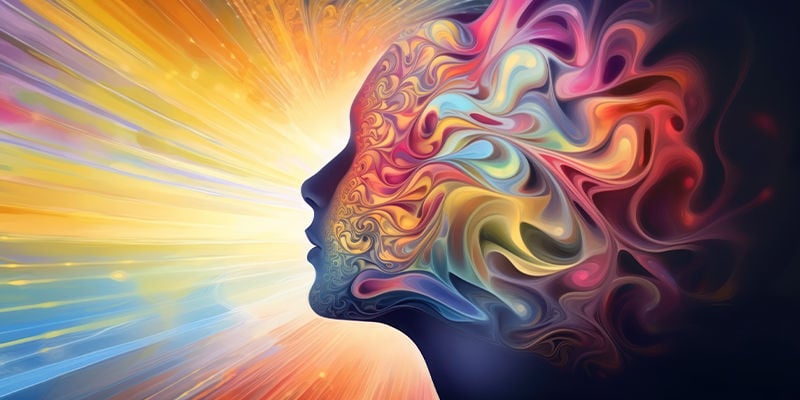
So, is ketamine a psychedelic?
Many people now class ketamine as a psychedelic, but the grounds upon which they do this are shaky, at best. Usually, this merging of categories comes from the medical community, who group them all together seemingly because they’re drugs that can be used recreationally and cause “trippy” feelings, but can also be used as novel treatments for depression. But SSRIs are also used to treat depression, and they’re not called psychedelics.
And, given that ketamine and psychedelics are thought to affect depression via different mechanisms of action, it’s hard to see how this category binds them together. What’s more, psychedelics appear most effective at high doses, while ketamine is effective at lower doses. In other words, it is thought that the psychedelic experience is crucial to its efficacy regarding certain conditions, whereas with ketamine, there appears to be no need for someone to experience the psychotropic effects of the drug in order to feel its potential benefits.
That being said, if we take the meaning of psychedelic (mind revealing) literally, then ketamine may count as one, given that high doses can give people unusual insight into their inner worlds. But this is presumably not what most people mean when they group them together.
But by most other measures, psychedelics and ketamine seem to be quite distinct. Classical psychedelics are serotonergic, non-addictive, have very few physical effects, and foster a sense of empathy and connection to the world. Ketamine has none of these traits.
While these drugs can have similar medical applications, that shouldn’t mean we jump to group them all together. They’re distinct substances with mostly different effects; where they can be used in the same way, they operate very differently.
- Corkery, J. M., Hung, W. C., Claridge, H., Goodair, C., Copeland, C. S., & Schifano, F. (2021). Recreational ketamine-related deaths notified to the National Programme on Substance Abuse Deaths - https://journals.sagepub.com
- Fuentes, Juan José, Fonseca, Francina, Elices, Matilde, Farré, Magí, Torrens, & Marta. (2020/01/21). Therapeutic Use of LSD in Psychiatry: A Systematic Review of Randomized-Controlled Clinical Trials - https://www.frontiersin.org
- Gattuso, James J, Perkins, Daniel, Ruffell, Simon, Lawrence, Andrew J, Hoyer, Daniel, Jacobson, Laura H, Timmermann, Christopher, Castle, David, Rossell, Susan L, Downey, Luke A, Pagni, Broc A, Galvão-Coelho, Nicole L, Nutt, David, Sarris, & Jerome. (2023/03/22). Default Mode Network Modulation by Psychedelics: A Systematic Review - https://academic.oup.com
- Goodwin, G. M., Aaronson, S. T., Alvarez, O., Arden, P. C., Baker, A., Bennett, J. C., Bird, C., Blom, R. E., Brennan, C., Brusch, D., Burke, L., Campbell-Coker, K., Carhart-Harris, R., Cattell, J., Daniel, A., DeBattista, C., Dunlop, B. W., Eisen, K., & Fei. (2022). Single-Dose Psilocybin for a Treatment-Resistant Episode of Major Depression - https://www.nejm.org
- Lent JK, Arredondo A, Pugh MA, & Austin PN. (2019 Oct). Ketamine and Treatment-Resistant Depression - https://pubmed.ncbi.nlm.nih.gov
- Sachdeva, B., Sachdeva, P., Ghosh, S., Ahmad, F., & Sinha, J. K. (2021). Ketamine as a therapeutic agent in major depressive disorder and posttraumatic stress disorder - https://www.researchgate.net










 United States
United States










